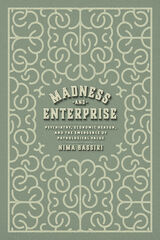247 scholarly books by University Press of New England and 18
start with C
247 scholarly books by University Press of New England and 18
247 scholarly books by University Press of New England
18 start with C start with C
18 start with C start with C

Cannabis Consulting
Helping Patients, Parents, and Practitioners Understand Medical Marijuana
Ezra Parzybok
University Press of New England, 2018
As the movement for legalization of marijuana spreads across the country, it is important to weigh the possible benefits and pitfalls of cannabis use. Cannabis Consulting is both a handbook and a report from the front lines of medical marijuana use. Writing from the perspective of a parent and veteran schoolteacher turned professional cannabis consultant, Ezra Parzybok tells the often-inspiring stories of his practice, where he assists victims of chronic pain, terminal disease, and even conditions such as ADHD. This timely volume was written for patients and families, law enforcement and health professionals, who are trying to make decisions about cannabis during this critical era of transition. It is an honest, clear-eyed exploration of the marijuana debate that looks beyond the hype and disinformation on both sides to chart a new path toward rational and safe use of cannabis.
[more]

The Captain’s Best Mate
The Journal of Mary Chipman Lawrence on the Whaler Addison, 1856–1860
Mary Chipman. Lawrence
University Press of New England, 1986
The diary of a wife who, with their five-year old daughter, accompanied her husband on a three-and-a-half year whaling voyage.
[more]
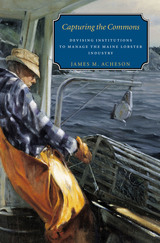
Capturing the Commons
Devising Institutions to Manage the Maine Lobster Industry
James M. Acheson
University Press of New England, 2004
One of the most pressing concerns of environmentalists and policy makers is the overexploitation of natural resources. Efforts to regulate such resources are too often undermined by the people whose livelihoods depend on their use. One of the great challenges for wildlife managers in the twenty-first century is learning to create the conditions under which people will erect effective and workable rules to conserve those resources. James M. Acheson, author of the best-selling Lobster Gangs of Maine (the seminal work on the culture and economics of lobster fishing), here turns his attention to the management of the lobster industry. In this illuminating new book, he shows that resource degradation is not inevitable. Indeed, the Maine lobster fishery is one of the most successful fisheries in the world. Catches have been stable since World War II, and record highs have been achieved since the late 1980s. According to Acheson, these high catches are due, in part, to the institutions generated by the lobster-fishing industry to control fishing practices. These rules are effective. Rational choice theory frames Acheson’s down-to-earth study. Rational choice theorists believe that the overexploitation of marine resources stems from their common-pool nature, which results in collective action problems. In fisheries, what is rational for the individual fishermen can lead to disaster for the society. The progressive Maine lobster industry, lobster fishermen, and local groups have solved a series of such problems by creating three different sets of regulations: informal territorial rules; rules to control the number of traps; and formal conservation legislation. In recent years, the industry has successfully influenced new regulations at the federal level and has developed a strong co-management system with the Maine government. The process of developing these rules has been quite acrimonious; factions of fishermen have disagreed over lobster rules designed to give commercial advantage to one group or another. Although fishermen and scientists have come to share a conservation ethic, they often disagree over how to best conserve the lobster and even the quality of science. The importance of Capturing the Commons is twofold: it provides a case study of the management of one highly successful fishery, which can serve as a management model for policy makers, politicians, and local communities; and it adds to the body of theory concerning the conditions under which people will and will not devise institutions to manage natural resources.
[more]
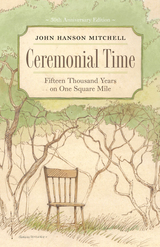
Ceremonial Time
Fifteen Thousand Years on One Square Mile
John Hanson Mitchell
University Press of New England, 2013
“Ceremonial time” occurs when past, present, and future can be perceived simultaneously. Experienced only rarely, usually during ritual dance, this escape from linear time is the vehicle for John Mitchell’s extraordinary writing. In this, his most magical book, he traces the life of a single square mile in New England, from the last ice age through years of human history, including bear shamans, colonists, witches, local farmers, and encroaching industrial “parks.”
[more]
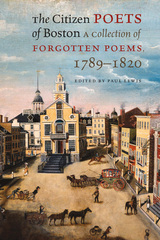
The Citizen Poets of Boston
A Collection of Forgotten Poems, 1789–1820
Edited by Paul Lewis
University Press of New England, 2016
Welcome to Boston in the early years of the republic. Prepare to journey by stagecoach with a young man moving to the “bustling city”; stop by a tavern for food, drink, and conversation; eavesdrop on clerks and customers in a dry-goods shop; get stuck in what might have been Boston’s first traffic jam; and enjoy arch comments about spouses, doctors, lawyers, politicians, and poets. As Paul Lewis and his students at Boston College reveal, regional vernacular poetry—largely overlooked or deemed of little or no artistic value—provides access to the culture and daily life of the city. Selected from over 4,500 poems published during the early national period, the works presented here, mostly anonymous, will carry you back to Old Boston to hear the voices of its long-forgotten citizen poets. A rich collection of lost poetry that will beguile locals and visitors alike.
[more]
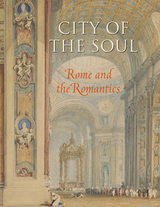
City of the Soul
Rome and the Romantics
John A. Pinto
University Press of New England, 2016
City of the Soul critically examines how an international cast of visitors fashioned Rome’s image, visual and literary, in the century between 1770 and 1870—from the era of the Grand Tour to the onset of mass tourism. The Eternal City emerges not only as an intensely physical place but also as a romantic idea onto which artists and writers projected their own imaginations and longings. The book will appeal to a wide audience of readers interested in the history of art, architecture, and photography, the Romantic poets, and other writers from Byron to Henry James. It will also attract the interest of historians of urbanism, landscape, and Italy. Nonspecialists and armchair travelers will enjoy the diverse literary and artistic responses to Rome.
[more]

Civic Agriculture
Reconnecting Farm, Food, and Community
Thomas A. Lyson
University Press of New England, 2004
While the American agricultural and food systems follow a decades-old path of industrialization and globalization, a counter trend has appeared toward localizing some agricultural and food production. Thomas A. Lyson, a scholar-practitioner in the field of community-based food systems, calls this rebirth of locally based agriculture and food production civic agriculture because these activities are tightly linked to a community’s social and economic development. Civic agriculture embraces innovative ways to produce, process, and distribute food, and it represents a sustainable alternative to the socially, economically, and environmentally destructive practices associated with conventional large-scale agriculture. Farmers’ markets, community gardens, and community-supported agriculture are all forms of civic agriculture. Lyson describes how, in the course of a hundred years, a small-scale, diversified system of farming became an industrialized system of production and also how this industrialized system has gone global. He argues that farming in the United States was modernized by employing the same techniques and strategies that transformed the manufacturing sector from a system of craft production to one of mass production. Viewing agriculture as just another industrial sector led to transformations in both the production and the processing of food. As small farmers and food processors were forced to expand, merge with larger operations, or go out of business, they became increasingly disconnected from the surrounding communities. Lyson enumerates the shortcomings of the current agriculture and food systems as they relate to social, economic, and environmental sustainability. He then introduces the concept of community problem solving and offers empirical evidence and concrete examples to show that a re-localization of the food production system is underway.
[more]
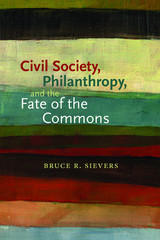
Civil Society, Philanthropy, and the Fate of the Commons
Bruce R. Sievers
University Press of New England, 2010
Among the greatest challenges facing humanity in the twenty-first century is that of sustaining a healthy civil society, which depends upon managing the tension between individual and collective interests. Bruce R. Sievers explores this issue by investigating ways to balance the public and private sides of modern life in a manner that allows realization of the ideal of individual freedom and, at the same time, makes possible the effective pursuit of the common good. He traces the development of civil society from the seventeenth-century Dutch Republic and the eighteenth-century Scottish Enlightenment, analyzes its legacy for modern political life, and explores how historical trends in the formation of civil society and philanthropy aid or impede our achievement of public goods in the modern era.
[more]
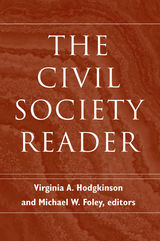
The Civil Society Reader
Virginia Hodgkinson
University Press of New England, 2003

Clay
The History and Evolution of Humankind’s Relationship with Earth’s Most Primal Element
Suzanne Staubach
University Press of New England, 2013
More than a third of the houses in the world are made of clay. Clay vessels were instrumental in the invention of cooking, wine and beer making, and international trade. Our toilets are made of clay. The first spark plugs were thrown on the potter’s wheel. Clay has played a vital role in the health and beauty fields. Indeed, this humble material was key to many advances in civilization, including the development of agriculture and the invention of baking, architecture, religion, and even the space program. In Clay, Suzanne Staubach takes a lively look at the startling history of the mud beneath our feet. Told with verve and erudition, this story will ensure you won’t see the world around you in quite the same way after reading the book.
[more]
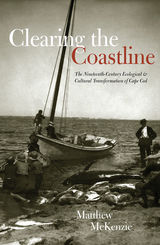
Clearing the Coastline
The Nineteenth-Century Ecological & Cultural Transformations of Cape Cod
Matthew McKenzie
University Press of New England, 2011
In just over a century Cape Cod was transformed from barren agricultural wasteland to bountiful fishery to pastoral postcard wilderness suitable for the tourist trade. This complex social, ecological, and scientific transformation fundamentally altered how Cape Codders used and managed their local marine resources, and determined how they eventually lost them. The Cape Cod story takes the usual land-use progression—from pristine wilderness to exploitation of resources to barren wasteland—and turns it on its head. Clearing the Coastline shows how fishermen abandoned colonial traditions of small-scale fisheries management, and how ecological, cultural, and scientific changes, as well as commercial pressures, eroded established, local conservation regimes. Without these protections, small fish and small fishermen alike were cleared from Cape Cod’s coastal margins to make room for new people, whose reinvention of the Cape as a pastoral “wilderness” allowed them to overlook the social and ecological dislocation that came before.
[more]
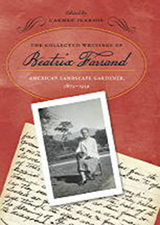
The Collected Writings of Beatrix Farrand
American Landscape Gardener, 1872-1959
Beatrix Farrand
University Press of New England, 2009
Beatrix Jones Farrand (1872–1959) was among the first professional American women landscape gardeners. One of the founding eleven members of the American Society of Landscape Architects, Farrand believed in using native plant materials to connect the natural and designed landscape. Her papers are archived at the University of California, Berkeley, and Harvard’s Arnold Arboretum. This volume offers a print version of most of her written work, which includes her gardening diary and a wide selection of essays. The volume also contains a bibliography of additional materials.
[more]
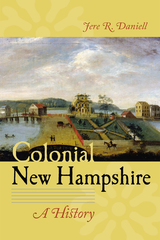
Colonial New Hampshire
A History
Jere R. Daniell
University Press of New England, 2015
In his full-scale history of New Hampshire from the Algonkin people to the coming of the American Revolution, the historian Jere R. Daniell discusses the Indian population, the development of community life, the founding of New Hampshire as a royal colony, the political adjustments that existence as a separate colony necessitated, the nature of New Hampshire’s social institutions, and many other subjects. His epilogue links colonial New Hampshire to subsequent developments in the state. This volume will interest historians of colonial New England and New Hampshire.
[more]
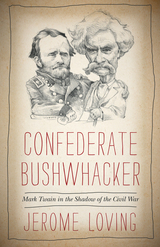
Confederate Bushwhacker
Mark Twain in the Shadow of the Civil War
Jerome Loving
University Press of New England, 2013
Confederate Bushwhacker is a microbiography set in the most important and pivotal year in the life of its subject. In 1885, Mark Twain was at the peak of his career as an author and a businessman, as his own publishing firm brought out not only the U.S. edition of Adventures of Huckleberry Finn but also the triumphantly successful Personal Memoirs of U. S. Grant. Twenty years after the end of the Civil War, Twain finally tells the story of his past as a deserter from the losing side, while simultaneously befriending and publishing the general from the winning side. Coincidentally, the year also marks the beginning of Twain’s descent into misfortune, his transformation from a humorist into a pessimist and determinist. Interwoven throughout this portrait are the headlines and crises of 1885—black lynchings, Indian uprisings, anti-Chinese violence, labor unrest, and the death of Grant. The year was at once Twain’s annus mirabilis and the year of his undoing. The meticulous treatment of this single year by the esteemed biographer Jerome Loving enables him to look backward and forward to capture both Twain and the country at large in a time of crisis and transformation.
[more]

Confession of a Serial Killer
The Untold Story of Dennis Rader, the BTK Killer
Katherine Ramsland
University Press of New England, 2017
In 1974, Dennis Lynn Rader stalked and murdered a family of four in Wichita, Kansas. Since adolescence, he had read about serial killers and imagined becoming one. Soon after killing the family, he murdered a young woman and then another, until he had ten victims. He named himself “B.T.K.” (bind, torture, kill) and wrote notes that terrorized the city. He remained on the loose for thirty years. No one who knew him guessed his dark secret. He nearly got away with his crimes, but in 2004, he began to play risky games with the police. He made a mistake. When he was arrested, Rader’s family, friends, and coworkers were shocked to discover that B.T.K. had been among them, going to work, raising his children, and acting normal. This case stands out both for the brutal treatment of victims and for the ordinary public face that Rader, a church council president, had shown to the outside world. Through jailhouse visits, telephone calls, and written correspondence, Katherine Ramsland worked with Rader himself to analyze the layers of his psyche. Using his drawings, letters, interviews, and Rader’s unique codes, she presents in meticulous detail the childhood roots and development of one man’s motivation to stalk, torture, and kill. She reveals aspects of the dark motivations of this most famous of living serial killers that have never before been revealed. In this book Katherine Ramsland presents an intelligent, original, and rare glimpse into the making of a serial killer and the potential darkness that lives next door.
[more]
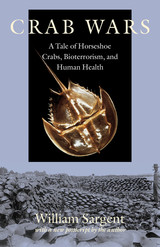
Crab Wars
A Tale of Horseshoe Crabs, Bioterrorism, and Human Health
William Sargent
University Press of New England, 2006
Surviving almost unmolested for 300 million years, the horseshoe crab is now the object of an intense legal and ethical struggle involving marine biologists, environmentalists, US government officials, biotechnologists, and international corporations. The source of this friction is the discovery 25 years ago that the blood of these ancient creatures serves as the basis for the most reliable test for the deadly and ubiquitous gram-negative bacteria. These bacteria are responsible for life-threatening diseases like menengitis, typhoid, E. coli, Legionnaire’s Disease and toxic shock syndrome. Because every drug certified by the FDA must be tested using the horseshoe crab derivative known as Limulus lysate, a multimillion dollar industry has emerged involving the license to “bleed” horseshoe crabs and the rights to their breeding grounds. Since his youthful fascination with these ancient creatures, William Sargent has spent much of his life observing, studying, and collecting horseshoe crabs. As a result, he presents a thoroughly accessible insider’s guide to the discovery of the lysate test, the exploitation of the crabs at the hands of multinational pharmaceutical conglomerates, local fishing interests, and the legal and governmental wrangling over the creatures’ ultimate fate. In the end, the story of the horseshoe crab is a sobering reflection on the unintended consequences of scientific progress and the danger of self-regulated industries controlling a limited natural resource.
[more]
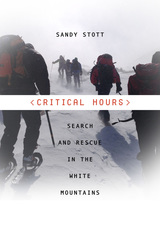
Critical Hours
Search and Rescue in the White Mountains
Sandy Stott
University Press of New England, 2018
A misread map, a sudden storm, a forgotten headlamp—and suddenly a leisurely hike turns into a treacherous endeavor. In the past decade, inexpensive but sophisticated navigation devices and mobile phones have led to alarming levels of overconfidence on the trail. Adding to this worrisome trend, the increasing popularity of ventures into mountainous terrain has led hikers seeking solitude—or an adrenaline rush—into increasingly remote or risky forays. Sandy Stott, the “Accidents” editor at the journal of the Appalachian Mountain Club, delivers both a history and a celebration of the search and rescue workers who save countless lives in the White Mountains—along with a plea for us not to take their steadfastness and bravery for granted. Filled with tales of astonishing courage and sobering tragedy, Critical Hours will appeal to outdoor enthusiasts and armchair adventurers alike.
[more]
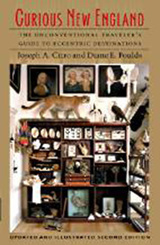
Curious New England
The Unconventional Traveler’s Guide to Eccentric Destinations
Joseph E. Citro and Diane E. Foulds
University Press of New England, 2004
New England is truly a Cabinet of Curiosities, and this indispensable guide directs you to its most bizarre, off the wall, and unsettling exhibits. Some evoke hilarity, some horror. Discover singing sand, glowing tombstones, ghostly squirrels, and a musical instrument said to cause madness. Marvel at the most mysterious manuscript in the world. Visit a miniature replica of the Holy Land or climb carved stone steps leading . . . nowhere. Curious New England points the way to all the tantalizing treats and terrifying treasures that remain tucked away in overlooked museums, private collections, and forgotten recesses of this very special region. *A cursed statue in Maine *Ageless American Megaliths *A window embedded in Vermont earth *Titus’s Arch on a New Hampshire hilltop *Artwork made from insect parts With precise directions, hours, and contact information, these fascinating pages reveal each mystery, miracle, and marvel, from world-class weirdness, to minor curiosities, to entertaining distractions. There'll be no more boring Sunday drives when you can visit a spider farm, explore the laboratory of “mad” scientist Wilhelm Reich, view the Hobo Hotel, and observe houses made from paper, wooden crates, mounds of earth—even covered bridges. And New England’s wonders never cease: discover evidence of manned flight a century before the Wright Brothers; visible phantoms manifesting from marble columns; and automobiles emerging from tarmac like dinosaurs from pits of tar. This one-of-a-kind collection spotlights all six New England states, illuminating everything that’s wicked, weird, and wonderful in every hidden corner of a region that rivals Old England in mysteries, miracles, and marvels.
[more]
READERS
Browse our collection.
PUBLISHERS
See BiblioVault's publisher services.
STUDENT SERVICES
Files for college accessibility offices.
UChicago Accessibility Resources
home | accessibility | search | about | contact us
BiblioVault ® 2001 - 2024
The University of Chicago Press



